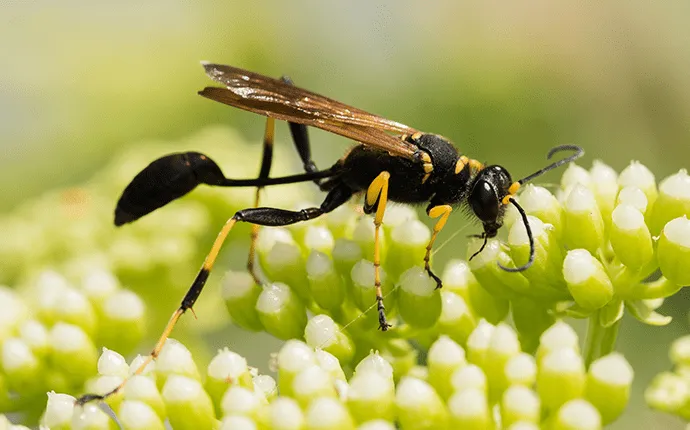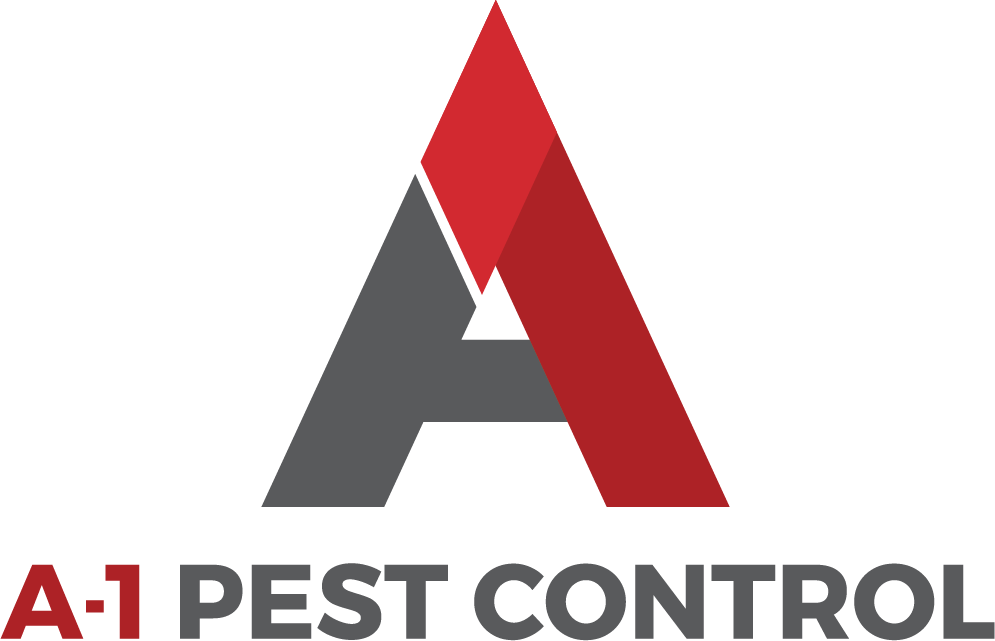

Bug Identifier: Know Your Stinging Insects
When you’re lounging in your backyard, the last thing you want to worry about is a bug sting or bite ruining your good time. To help you know what to look out for, and what to do if you have a stinging insect problem on your property, A-1 Pest Control has all the answers to stinging insect identification in North Carolina.
North Carolina Stinging Insect Identification
In North Carolina, you can find a variety of stinging insects in your backyard. Some of them are social and hang out with hundreds to thousands of other stinging insects in nests designed to accommodate their numbers. Others are solitary creatures that prefer their own company. When working or playing outside, it’s important to keep your eyes peeled for any potentially dangerous insects.

Bumble Bees
Usually between half an inch and an inch long, these insects have oval shaped, fuzzy bodies, and are most easily recognized by their black and yellow stripes. Only female bumble bees have stingers, and can inflict a painful sting. Their nests are usually found in pre-existing holes in your yard.

Bald-Faced Hornets
Though not true hornets, these stinging insects are similar in size to their well-known namesakes. They are most closely related to yellow jackets, and can be identified by their long, thin bodies that can grow up to ⅝ of an inch in length. They are all black, with the exception of an off-white pattern on their face, abdomen, and thorax.
European Hornets
European hornets can be identified by their brown or yellow color with a paler face, and their long bodies that can grow up to 1 ½ inches in length. Their nests are usually found in a cavity, and they attack readily as soon as they perceive a threat.

Mud Daubers
Mud daubers are around 1 ½ to 2 inches long. They can be identified by their black or metallic blue color with yellow or green markings, and their narrow waists that give them their slender appearance.

Paper Wasps
As you may have guessed from the name, paper wasps resemble other wasps in appearance, with a pinched waste and long legs. They are usually around ½ to i inch long, with black or brown bodies and yellow or orange markings.

Yellow Jackets
Yellow jackets’ signature color is most prominent on their bodies: Often a yellow and black striped pattern can easily be seen, along with a black and yellow color combo on their heads. They are usually around ⅜ to ⅝ of an inch in length, and are hairless with elongated bodies and wings.

Carpenter Bees
Often mistaken for bumble bees because of their size, carpenter bees are large, black, and yellow bees. They are often found tunneling in wooden decks, windowsills, overhangs, and other unpainted wood sources including trees. Another distinguishing feature, carpenter bees have shiny, black tail sections.
While carpenter bees tunnel in wood to create nests, the damage that occurs is typically from woodpeckers trying to reach the larvae in the holes.

Stinging Insect Facts & FAQ
What stinging insect has the worst side effects?
The insect with the most painful sting is also the one with the worst side effects: The bullet ant. Some have compared the sting of these ants to the feeling of a gunshot, giving it its name.
The waves of excruciating pain can last as long as 24 hours, and can also induce fever, nausea, and cardiac arrhythmia. Plus, when they sting they release a chemical signaling others to sting as well.
About how many stinging insects are common to North Carolina?
While there are around 500 species of stinging insects in North Carolina, some are more dangerous than others. Fire ants, bald-faced hornets, european hornets, and yellow jackets have some of the most painful stings that elicit some of the strongest reactions.
How many different types of stinging insects are there?
According to Purdue University, there are around 20,000 species of stinging bees, 9,000 species of stinging ants, and 800 species of stinging wasps.
Of those, around 700 species of ants, 35 species of bees, and about 30 species of wasps can be found in the U.S.
The most painful sting in the world
The most painful insect sting in the world is the sting of the bullet ant. According to entomologist Justin O. Schmidt—who developed the Schmidt Pain Index in which he ranked the stings and bites of hundreds of insects—these stings result in a “pure, intense, brilliant pain. Like walking over flaming charcoal with a three-inch nail embedded in your heel”. That pain can last for up to 24 hours, earning it the highest rating for pain on the Index.
The bullet ant is most commonly found in the Amazon Rainforest, from Nicaragua to Paraguay.
Are stinging insects dangerous?
Stinging insects should be considered dangerous. Even the most docile stinging insects has the potential to sting. Stings from bees, wasps and other stinging insects produce a variety of reactions including severe allergic reactions for some individuals.
In addition to the health risks these pests pose, some species of stinging insects can cause damage to structures and even trees and shrubs. While stinging insects are beneficial to the environment, care should be taken if they become a problem in or around homes and businesses.
What should you do if you’re stung?
According to the CDC, the following steps should be taken if you or someone you are with is stung by a bee or other stinging insect.
- Have someone stay with the victim to be sure that they do not have an allergic reaction.
- Wash the site with soap and water.
- Remove the stinger using gauze wiped over the area or by scraping a fingernail over the area. Never squeeze the stinger or use tweezers.
- Apply ice to reduce swelling.
- Do not scratch the sting as this may increase swelling, itching, and risk of infection.
It is always important to keep watch for trouble breathing, severe reddening or swelling of the skin, nausea or vomiting, a tight feeling in the throat, a rapid heartbeat, dizziness, or loss of consciousness. If you notice any signs of anaphylaxis or anaphylactic shock, seek immediate medical attention.
What attracts stinging insects?
Stinging insects are often attracted to properties that offer them their three basic needs- food, water, and shelter. To help keep stinging insects from being attracted to your property you should maintain your yard, keeping it mowed and clear of overgrowth. Many flowers attract bees and wasps, because of this you may want to consider planting flowers in the farthest areas from your home. Outdoor events that include grilling and other sources of food often attract stinging insects to properties. To deter these pests from crashing you should:
- Keep food that is not being consumed inside
- Store trash cans away from the main eating area
- Picking up soda cans and other beverage containers once they’re consumed and using covered cups
What to do if you find stinging insects on your property
A stinging insect on your property isn’t necessarily a bad thing. However, if you’ve found one attached to your home or in close proximity to people, you may consider have it removed by a professional. DIY solutions are often ineffective and result in greater risk for individuals.
How do you get rid of stinging insects?
The best way to get rid of stinging insects is to partner with a pest control company that has the experience and equipment needed to safely get rid of a nest. At A-1 Pest Control, we provide stinging insect control services that take care of bees, wasps, and other stinging pests that have made themselves at home on properties. For more information about our services, please contact us.
What are some stinging insect prevention tips?
To help make your property less attractive to stinging insects, we suggest implementing the following prevention measures:
- Check areas around the exterior of your property, caulking up any entry points that are found.
- Make sure that all chimneys have tight fitting covers on them.
- Stain or paint wood surfaces to deter carpenter bees from drilling holes.
- Don’t leave sugary foods outside
- Make sure that trash cans have tight fitting lids on them to prevent stinging insects from foraging for food into them.
- Remove old trees and stumps, and fill in holes that could prove to be ideal nesting sites for stinging insects.
- Avoid wearing floral prints or perfumes when spending time outside.

What to Do if You Have a Stinging Insects In Your Home
If you have noticed several stinging insects in your North Carolina home, the best way to tackle the issue is to contact a team of pest control professionals to safely find and remove the nests.
At A-1 Pest Control, we have been making yards and homes safer by removing stinging insects in Raleigh and the surrounding area for over 50 years. We have the latest technology, products, and training to guarantee the safety of your home and family, and to get you back to enjoying your home without the worry.

About A-1 Pest Control
First started in 1966, A-1 Pest Control’s services have grown to include more than just a few pests. We tackle everything from rodent and insect control, to crawl space encapsulation and radon mitigation.
While our services and coverage area has expanded, our approach has never changed. Each member of your team is thoroughly vetted and engages in constant education to be sure we are bringing every client in our community the best service around. Our values have always been communication, safety, and consideration.
To schedule your free stinging insect consultation today, contact us at 828-481-9140 or fill out the form below!
Recommended Program for This Pest:

Initial Treatment
Only $
What's Included:
- Year-Round Protection
- Covers 15+ Pests
- Free Re-treatments
- Stinging Insect Control on the Structure
- Seasonal Mosquito Treatments
- Fire Ant Control
- 10 Treatments
- Outdoor Tick & Flea Control
- Indoor Flea Treatments
- Sentricon Termite Protection
Contact Us
Please fill out this form and we will get back to you shortly.
"*" indicates required fields


